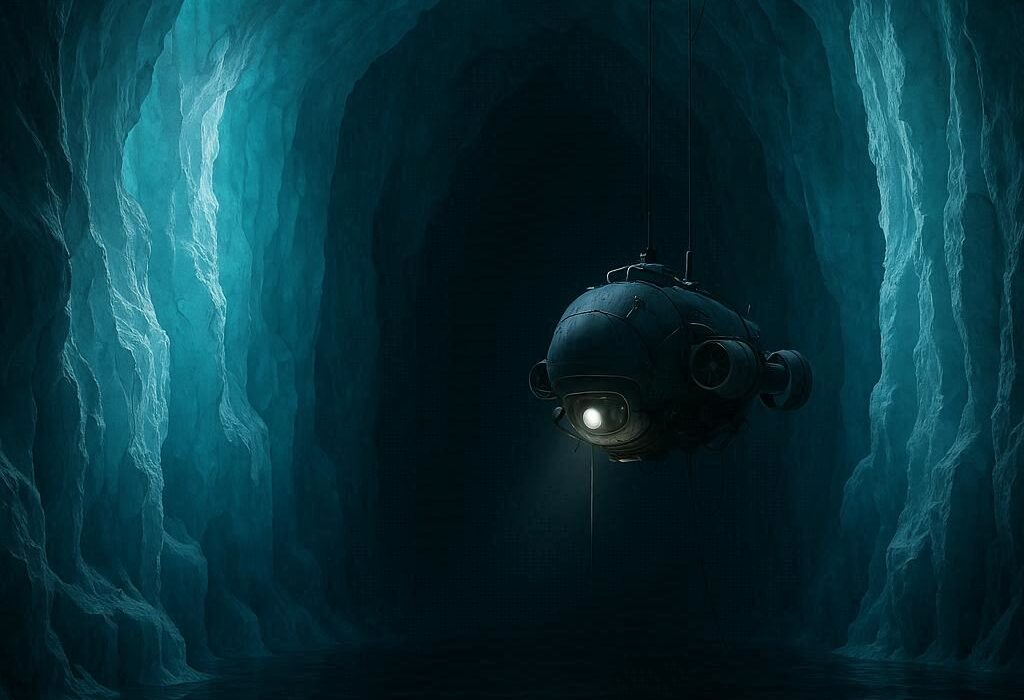For centuries, humanity has looked skyward with awe, imagination, and longing. The night sky has always been more than a tapestry of distant lights—it has been a mirror of our ambitions. Ancient civilizations traced myths in the constellations, storytellers imagined gods and heroes dwelling among the stars, and visionaries spoke of celestial kingdoms where humanity might one day live. What once belonged only to myth and fantasy is now slipping quietly into the realm of science and engineering. The idea of a city in orbit—an actual settlement of thousands of people circling Earth—is no longer the distant dream it once was. It might be closer than most of us realize.
The vision of humanity living beyond Earth has grown steadily since the dawn of the Space Age. When Yuri Gagarin became the first human to orbit Earth in 1961, the concept of a space city was far beyond the technological horizon. Yet in just a few decades, we have built space stations, developed reusable rockets, and laid the groundwork for commercial space travel. What was once science fiction is quickly becoming science fact. Today, powerful industries, ambitious entrepreneurs, and international collaborations are actively preparing for the moment when humanity establishes not just a laboratory in space, but a living, breathing city.
The question is no longer if it will happen. The question is when. And perhaps, the answer is: much sooner than we think.
From Outposts to Cities
To understand how we might build a city in orbit, we need to look at the stepping stones already in place. The International Space Station (ISS) is the clearest example of what humanity can achieve when nations work together. Since the year 2000, the ISS has been continuously inhabited, hosting astronauts from around the world. It is not merely a spacecraft—it is a microcosm of international society. In many ways, the ISS is the prototype of an orbital community.
But it is still far from a city. The ISS typically houses fewer than a dozen people, all trained astronauts working in highly specialized roles. Its modules are cramped, its resources limited, and its infrastructure dependent on constant resupply from Earth. A city in orbit would need to support hundreds or even thousands of residents, many of them not scientists or engineers, but families, doctors, teachers, artists, and entrepreneurs. For such a leap to be possible, several critical challenges must be overcome: life support, radiation protection, artificial gravity, and sustainable economics.
Each of these challenges is formidable, but none of them are insurmountable. Advances in space technology, materials science, robotics, and biotechnology are converging to make the idea of orbital cities plausible within this century—perhaps within just a few decades.
The Architecture of Space Cities
The first designs for orbital habitats emerged in the 1970s, when NASA commissioned studies from physicist Gerard K. O’Neill and his colleagues. O’Neill envisioned gigantic structures, kilometers long, capable of housing tens of thousands of people. His most famous concepts were the “O’Neill Cylinders,” rotating habitats that used centrifugal force to simulate gravity. Inside these colossal structures, entire landscapes could exist—rolling hills, lakes, forests, and towns—all beneath a curved horizon.
While O’Neill’s visions were breathtaking, they were also far beyond the reach of 20th-century engineering and budgets. The sheer cost of launching such massive structures into orbit was prohibitive. But today, thanks to reusable rockets pioneered by companies like SpaceX and Blue Origin, the economics are changing. What once cost tens of thousands of dollars per kilogram to launch now costs less than a thousand, and prices continue to fall. This shift alone makes the construction of large-scale habitats increasingly feasible.
Future orbital cities may not begin as sprawling O’Neill Cylinders. Instead, they might resemble modular stations, gradually expanded piece by piece. Imagine a cluster of interconnected modules, some dedicated to housing, others to agriculture, research, recreation, and commerce. As the settlement grows, it could incorporate rotating rings to provide artificial gravity, shielding layers against radiation, and vast solar arrays to power its systems. What begins as a settlement for a few hundred could evolve into a city of thousands.
The Science of Living in Orbit
Building a city in orbit is not simply a question of rockets and modules. It requires solving the profound biological and environmental challenges of long-term space habitation.
One of the greatest is gravity—or the lack thereof. Microgravity profoundly affects the human body, leading to muscle atrophy, bone loss, fluid redistribution, and even changes in vision. Astronauts aboard the ISS exercise daily to counteract these effects, but for a long-term population that includes children and the elderly, this is not sustainable. Artificial gravity, created by rotation, may be the answer. By spinning sections of an orbital habitat, centrifugal force can mimic gravity, keeping residents healthy. Designing such rotating habitats, however, requires balancing engineering, comfort, and cost.
Another challenge is radiation. Earth’s atmosphere and magnetic field protect us from cosmic rays and solar particles, but in orbit, these dangers are ever-present. Long-term exposure can damage DNA, increase cancer risk, and harm reproductive health. To counter this, orbital cities will need effective shielding. This could be achieved with thick walls of water, specialized polymers, or even magnetic fields generated by superconductors. The materials science of tomorrow will play a critical role in ensuring that orbital life is as safe as life on Earth.
Life support is equally vital. A city cannot rely on endless shipments from Earth. It must recycle air, water, and waste in closed-loop systems. Plants will be central to this, providing oxygen, absorbing carbon dioxide, and producing food. Orbital farms—hydroponic or aeroponic systems—could sustain populations with fresh vegetables, while lab-grown meat might provide protein. The challenge is not only to make survival possible, but to make life enjoyable, with diverse diets, comfortable living spaces, and meaningful daily routines.
Economics Beyond Earth
No city can thrive without an economy. A space settlement cannot exist as a mere experiment—it must generate value. Fortunately, the possibilities for orbital economies are vast.
One opportunity lies in tourism. Even today, wealthy adventurers pay millions for short stays aboard the ISS. As costs decline, orbital hotels could open to thousands of visitors annually, drawn by the experience of Earthrise, zero-gravity recreation, and the allure of space dining. These tourists could help finance the early stages of orbital settlements.
Manufacturing is another promising avenue. Certain processes work better in microgravity: the growth of perfect crystals, the production of advanced alloys, and the development of pharmaceuticals. Orbital factories could produce materials and medicines that are impossible to make on Earth, creating new markets worth billions.
Energy may also be a driver. Vast orbital solar arrays could harvest sunlight unobstructed by Earth’s atmosphere, transmitting power back to the surface through microwaves or lasers. Such systems could supply clean, limitless energy, fueling industries both on Earth and in space.
And then there is the ultimate prize: space resources. Asteroids contain metals—platinum, nickel, cobalt—in quantities that dwarf Earth’s reserves. Orbital cities, positioned as hubs between Earth and the asteroid belt, could become centers of mining, refining, and trade. What begins as a settlement may grow into a thriving economy that reshapes the future of civilization.
The Social Fabric of Orbital Life
A city is not merely steel and glass—it is people. What would life actually feel like in orbit? How would families adapt to living among the stars?
The first generations of orbital settlers will likely be pioneers: scientists, engineers, doctors, and entrepreneurs. But as the population grows, society will diversify. Teachers will be needed to educate children, artists to inspire, farmers to cultivate crops, and leaders to govern. Schools, theaters, parks, and marketplaces will rise alongside laboratories and workshops.
Culture will evolve in unexpected ways. Traditions may emerge around orbital sunrises and sunsets, which occur every ninety minutes in low Earth orbit. Festivals might celebrate the anniversary of a station’s founding or the launch of the first settlers. Music and art will reflect the unique perspective of living above Earth, with its breathtaking views of oceans, mountains, and storms swirling below.
New legal and political frameworks will also be necessary. Who governs an orbital city? Which nation’s laws apply? Will settlers create their own charter, a constitution written in the stars? Just as cities on Earth have distinct identities, so too will orbital settlements develop their own cultures, norms, and systems of governance.
Ethical Questions in the Sky
With great opportunity comes profound responsibility. The creation of orbital cities raises ethical questions that humanity must address.
Who gets to live in space? Will it be a privilege reserved for the wealthy, or will access be democratized as costs fall? If orbital cities become havens for the rich while Earth faces climate change and inequality, they could deepen divisions rather than inspire unity.
There are also questions of environmental stewardship. Space debris already poses a growing hazard in Earth orbit. The construction of massive habitats could add to the clutter if not carefully managed. International cooperation will be essential to prevent orbital cities from creating new dangers.
And perhaps the most profound question: what does it mean for humanity to live beyond Earth? Will we see ourselves as caretakers of both worlds, Earth and space? Or will we repeat old mistakes, exploiting resources without regard for consequences? The answers will shape not only our future in orbit, but the future of humanity itself.
The Road Ahead
The journey to the first orbital city is already underway. Space agencies, private companies, and visionary architects are sketching plans, running simulations, and testing technologies. Some concepts imagine rotating space hotels within the next decade. Others envision large-scale habitats by mid-century, housing thousands.
The timeline will depend on economics, politics, and human will. But history shows that once the possibility of a new frontier becomes real, progress accelerates rapidly. Just as the first railroads transformed continents, and the first airplanes shrank oceans, the first city in orbit will reshape human civilization.
For the children born into that city, Earth will not be their home but their neighbor. They will grow up watching the world spin below, a brilliant blue sphere in the infinite night. They will inherit a dual identity—of Earthlings and spacelings—carrying humanity into its next great chapter.
A Future Written in Light
The first city in orbit will not be the end of the story, but the beginning. From orbital cities, humanity will reach further: to lunar bases, to Martian settlements, and beyond. Each step outward will build on the lessons of the last, weaving a web of human presence throughout the Solar System.
Albert Einstein once said that imagination is more important than knowledge, because imagination embraces the entire world and all there ever will be to know. The dream of a city in orbit is imagination becoming knowledge, myth becoming reality.
When the first lights of an orbital city glow against the dark canvas of space, shining like a new star above Earth, it will mark a turning point in history. For the first time, humanity will no longer be bound to a single world. We will have taken our first steps into a larger universe—not as visitors, but as residents.
And when that moment comes, perhaps sooner than we expect, we will look up at the night sky, see that new light, and realize that the age of space cities has truly begun.






